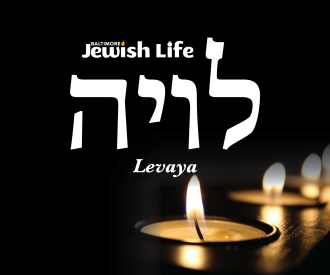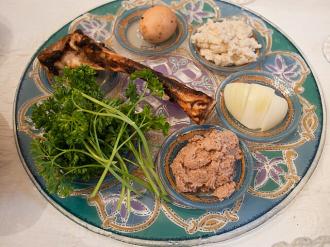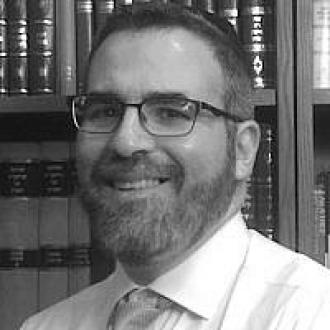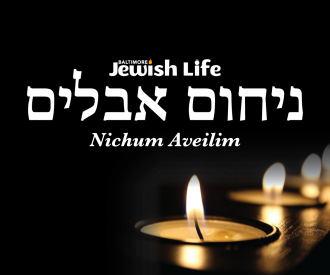“It’s getting to me,” said Zvi Gluck on the phone on Friday morning from Israel. He says that prior to his departure from New York he had to deal with the deaths of five young people from drug overdoses—all from within the New York frum community.
In fact we have had occasion to speak with Zvi more than several times this year as, sadly, since last Rosh Hashanah, over 100 young people have passed away as a result of drug use. It is a scourge that is inflicting our community in a most shocking and unexpected way.
Mr. Gluck is the man at the center of many of these situations, as his organization, Amudim, has become a go-to resource when young Jews get into trouble, most recently as a result of the opioid and heroin epidemic that has impacted many cities and communities around the world.
As you know just from perusing the news, the drug epidemic is legion. But somehow it seems especially appalling that it is seeping through the usually well-reinforced shell of our Orthodox Jewish community. Yes, it has been around for as long as most of us can remember; indeed, there have been tragic stories here and there. But it has never been like this.
Last week, in this and other newspapers, in the Misaskim listing of where people are sitting shivah, two of the six names listed were those of a man and a woman in their twenties who died of drug overdoses. In a ten-day span, five young people have lost their lives to drug overdoses—mostly heroin, which is dangerous unto itself and frequently fatal when laced with poisonous chemicals that are included either to enhance the high or exact profits for the dealers—most likely a combination of the two.
Zvi Gluck is battling this scourge on multiple fronts. There is the reality of drug use and drug addiction, and then there is the denial at the leadership level that such a problem even exists in our shuls, yeshivas, and otherwise well-insulated communities.
So I inquired of Zvi whether there is a commonality or a trend that he can point to and identify in a certain segment of the community that subscribes to ways of life that might lead to addiction. He says that in some cases he might be able to do so, but that in this recent rash of drug deaths, it cuts straight across all communal lines. “They were from chassidish homes as well as Modern Orthodox homes,” he said. “They were Sephardim and Ashkenazim.” He adds that he hopes the events of recent days will be a wakeup call to community leaders to accept the reality of these issues and finally begin to deal with them.
“We teach our kids how to cross a street safely and how to drive a car,” Gluck says. “I don’t see why we cannot teach them about the dangers of drug abuse and where this might all lead.”
We then talked about how it seems that many of these fatal overdoses occur in young people with a history of drug use and who overdose very soon after they are released from rehabilitation. Zvi Gluck explains that the nature of addiction is such that the typical addict uses drugs in constantly increasing amounts. Once the body is weaned off the drug in rehab, it can no longer tolerate high doses. “When addicts relapse, they tend to go directly to administering or taking the high dose they were accustomed to, and very often that is what ends their lives,” he says.
So aside from being jolted by the shock of this kind of news, what can we do to help prevent such occurrences in the future? I posed this question to Mr. Gluck.
“It’s not a subject that our schools want to address, but I think it is rapidly becoming clear that there is and will be no choice,” he says. Gluck adds that the matter of relapsing and overdosing on heroin or any other type of narcotic does not necessarily speak to the weakness or failure of drug rehabilitation. “It’s wrong to believe that rehab does not work for these young people,” he says. He explains that it is a matter of an event or a circumstance that is causing them some pain, and the objective is for the drug to address this one isolated issue and source of pain, but unexpectedly it spirals into drug abuse and the subsequent serious consequences we have witnessed over the last few weeks.
The question, at the end of the day, is what we as a community can do differently. And the Amudim founder and director emphasizes that there is no substitute for education and making certain that members of the community clearly understand the risks and the dangers when playing with drugs.
Gluck adds that, foremost, there must be regular drug testing in our schools and yeshivas. And he says that if you believe that there is one yeshiva anywhere in which drugs cannot be found—no matter how minimal the incidence may be—then you are deceiving yourself.
He understands that while some schools do have mandatory drug testing at the high-school level, there is a reluctance to have it, because of the idea that the community might misconstrue the fact that there is such testing as being indicative of a drug problem in the yeshiva.
As the practice grows and is extended throughout our education system, it will ultimately be seen as wise and prudent—if for nothing else other than the lives such a practice will save. One factor in all these deaths due to drug overdoses of late is that drug users subconsciously know that there is a communal reluctance to deal with these issues and that if they can just manage the addiction successfully they will be able to carry on as usual.
And then Zvi Gluck turns to the doctors who prescribe painkillers. No one is suggesting that these pills are not necessary for many who are in pain. Still, Gluck says, “Doctors need to be trained to wean patients off of medications.” He says that just writing prescriptions without considering the eventual possible consequences for the patient is a big part of the problem; doses of painkillers, whether for a physical injury or something else, should be prescribed in diminishing amounts over time.
And finally, and probably most controversially, he says that those recovering from addiction need to be taught how to deal with a relapse. Now that statement might seem a little odd, but Gluck says that the deaths over the last few years have occurred in all segments of the community because addicts do not understand the dangers of relapsing and what their bodies can endure and what is just too much to the point that it results in tragic endings.
We have heard about drug use mostly, though not exclusively, amongst young people in our community at an increasing pace, especially over the last few years. It is nothing new, of course, but as the population grows the problem replicates as well.
Zvi Gluck and Amudim have made impressive strides in the right direction. What is needed to help him—aside from material support—is to shake ourselves out of this stupor of denial that these are problems that impact only on someone else.
On Tuesday, the New York Post ran a story about one of the recent drug-overdose deaths in Boro Park, of a 22-year-old woman from a Chassidic home in the community. So the cat is out of the bag, so to speak. People are talking about it. It’s time for us to do so as well—openly and with brutal honesty.














